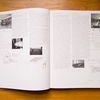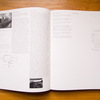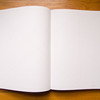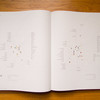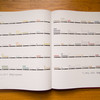Review: The Table of Power 2 by Jacqueline Hassink

Power is an abstract term that is hard to understand outside the world of physics. Why or how do some people have power, whereas others are powerless? And who really has power? When thinking of power, the first thing that comes to mind is the government. But in this day and age, the government appears to have much less power than we think - in part as a consequence of our demands. In contrast, corporations have managed to accumulate more and more power - power that feels even more abstract than our governments’. (more)
We’re now coming very slowly out of the Great Recession, Europe is trying to solve the financial problems of countries like Greece. In both cases, we do see our governments in action (or inaction). But there is very little talk of, let’s say, the role banks have played to create the mess. As a matter of fact, they first created the mess we found ourselves in, we then had to bail them out, and now they’re continuing to play their games as if nothing had happened (this is part of the reason why Greg Smith’s resignation letter caused such an uproar).
If you wanted to show this kind of corporate power - how would you go about it? Jacqueline Hassink’s approach was straightforward: Photograph the tables of corporate boardrooms. After all, that’s where their power is being wielded. That’s where decisions are being made, decisions that can often have tremendous consequences. The result is The Table of Power 2. As the title indicates, there is an earlier, pre-Great Recession version.
You can imagine that taking a photograph of a table will not necessarily say much about power - it might say something about how those in power view themselves (and the power they yield). So the book contains a rather significant other part, a very detailed, almost scientific investigations of the corporations, dissecting them. It starts off with a study of the tables themselves (their shapes and colours), and it then moves into statistics, lot of them: Revenues, numbers of employees, countries where the corporations are active etc. etc. etc.
In that sense, The Table of Power 2 is not so dissimilar from a company’s yearly report - the one document that is intended to provide accountability for its shareholders. Accumulated in one big book, having all that information reveals, well, very little. It is almost as if one expected to find a ghost in a machine, and then once one has taken the machine apart, one is left with all the pieces. There is no ghost. In the case of corporations, there is a bit of a ghost, namely the staggering amounts of money they have at their disposal.
In a literal sense, the book offers very little insights, and that is its strength. It would have been so tempting to produce a book with portraits of the CEOs - “these are the people that have all that power” - but wait a year or two, and those people are replaced by other corporate bureaucrats. Hassink thus resisted the temptation to look for something simple, aiming instead for something that many people might find frustrating: It’s “just” a book of tables, with a lot of numbers attached to them. But that comes so much closer to looking at what corporate power really is: It is that mundane. Pulling aside the curtain, the wizard is not one cranky old man playing with levers and having his voice amplified. Instead, it’s a bunch of corporate bureaucrats, sitting around fancy tables, moving large amounts of money from here to there.
The Table of Power 2, photographs by Jacqueline Hassink, design by Irma Boom, 224 pages, Hatje Cantz, 2012
(find my video presentation of the book here)


